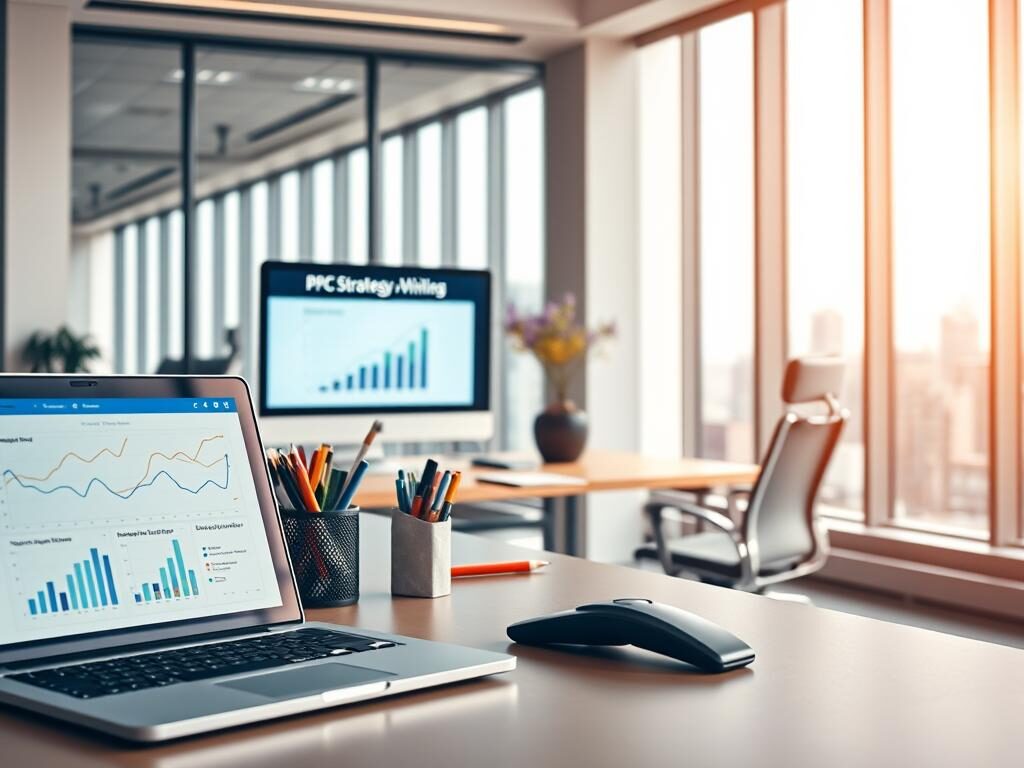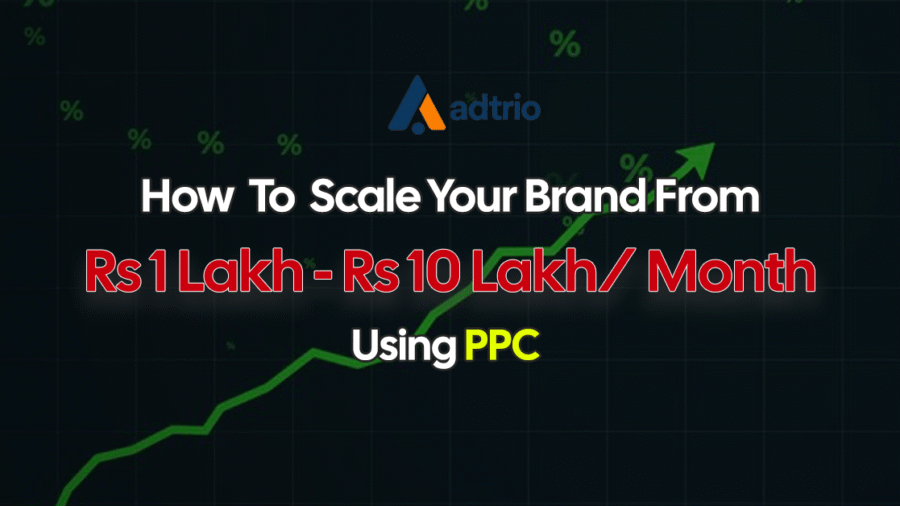Growing an online store needs careful planning and smart marketing. One of the best ways to grow fast is through Pay-Per-Click (PPC) ads. PPC helps businesses show up more online, get more of the right people to visit, and sell more. PPC gives you a way to market based on facts and numbers. It lets businesses see how well they’re doing and make smart choices. When online stores make their PPC better, they can reach the people they want to sell to more and get more bang for their buck. At Adtrio Media, our focus is to help online shop brands grow with smart Amazon and Flipkart ad plans. Our skilled team takes care of all – from finding the right words and setting up ad jobs to making sure ads work well and cost less. We work hard so your brand can find the right people and truly grow.
The Current State of E-commerce Brand Growth in 2025
E-commerce brand growth in 2025 has a strong connection to the smart use of digital marketing channels Pay-Per-Click (PPC) ads. As the online world keeps changing, Direct-to-Consumer (D2C) brands find many ways to grow their businesses.
Market Opportunities for D2C Brands in Today’s Digital Landscape
The online world gives many chances for D2C brands to get big by using different ways to sell. A main thing to look at is PPC ads, which work well in finding new buyers looking for goods.
Why PPC Has Become the Growth Engine for Successful Brands
PPC has grown to be a key way for big e-commerce brands to get more. With marketplaces like Amazon, brands can really stand out more and sell more. A good PPC plan can make big growth happen, as many examples show.
Case Studies: Brands That Scaled from ₹1L to ₹10L
Several D2C brands have successfully scaled their monthly revenue from ₹1L to ₹10L using strategic PPC campaigns. For instance, a leading fashion brand utilized Amazon PPC to increase their sales by targeting specific product categories. The results were impressive, with a significant return on ad spend (ROAS).
| Brand | Initial Revenue | Scaled Revenue | PPC Platform |
| FashionForward | ₹1L | ₹10L | Amazon PPC |
| BeautyBoost | ₹1L | ₹8L | Flipkart Ads |
| HomeHub | ₹1L | ₹9L | Amazon PPC |
By partnering with a D2C brands agency such as Adtrio Media, businesses can tap into expert knowledge and resources to optimize their PPC campaigns, leading to faster and more sustainable growth.
Understanding PPC Fundamentals for Rapid E-commerce Scaling
PPC is a strong tool for e-commerce businesses wanting to grow fast in today’s tough digital world. As e-commerce keeps growing, using Amazon services and other PPC platforms can truly boost a brand’s online look and push sales up.
Essential PPC Platforms for Modern E-commerce Businesses
Modern e-commerce businesses have multiple marketplaces/PPC platforms at their disposal. These include:
- Google Ads for search intent targeting
- Amazon Advertising for in-market audience reach
- Facebook and Instagram Ads for social media engagement
Each platform offers unique benefits, and a multi-platform approach can maximize reach and ROI.
Key Performance Indicators That Drive 10X Growth
To achieve 10X growth, e-commerce businesses must focus on key performance indicators (KPIs) such as:
- Conversion Rate
- Return on Ad Spend (ROAS)
- Customer Acquisition Cost (CAC)
Monitoring these KPIs closely allows businesses to make data-driven decisions and optimize their PPC campaigns for better performance.
Setting Realistic Timelines for Your Scaling Journey
Growing an online shop from ₹1L to ₹10L each month can’t be done fast. It needs smart plans, steady work, and constant bettering. Using past numbers and market checks to set true times is key to handle hopes and hit steady growth.
By knowing PPC basics, using the right spots, looking at main KPIs, and setting true times, online shops can set up for quick and lasting growth.
Assessing Your Current E-commerce Performance
Checking how well your online shop is doing right now is key to growing it well. This key move means looking closely at your current pay-per-click campaigns and spotting both the good parts and the bad parts.
Conducting a Comprehensive PPC Audit
A comprehensive PPC audit is essential to understand your current campaign structures, ad creatives, and targeting strategies. This involves:
- Reviewing campaign settings and ad extensions
- Analyzing ad copy and landing page relevance
- Evaluating keyword performance and negative keywords
Identifying Critical Growth Bottlenecks
Identifying bottlenecks is crucial to address the areas that are hindering your growth. Common bottlenecks include:
- Inefficient bidding strategies
- Poor ad relevance and quality scores
- Inadequate landing page experiences
Establishing Your Baseline Metrics for Scaling
Establishing baseline metrics is vital to measure future growth. Key metrics include:
- Current conversion rates
- Average order value (AOV)
- Customer acquisition cost (CAC)
Using Analytics to Uncover Hidden Opportunities
Analytics tools can reveal hidden opportunities by providing insights into customer behavior and campaign performance.
Quote: “Data is the new oil, and analytics is the engine that drives business growth.“
By leveraging analytics, you can identify trends, optimize campaigns, and ultimately drive growth for your ecommerce brand.
Developing a 10X Growth PPC Strategy for Your D2C Brand
To hit 10X growth, D2C brands need to build a full PPC plan that covers many parts. This means making clear goals, setting a good budget, and using different sites to grow reach.
Setting Clear Monthly Revenue Milestones
It is key to set clear money goals to check on progress and change plans as needed. By having real aims, D2C brands can point their work and money at getting real results.
Creating a Progressive Budget Plan for Scaling
A strong budget plan is key for helping a D2C brand grow. This means sharing money over different sites and ads to get the best ROI.
| Platform | Initial Budget Allocation | Projected Growth |
| Google Ads | 40% | 30% monthly increase |
| Facebook Ads | 30% | 25% monthly increase |
| Amazon PPC | 30% | 20% monthly increase |
Designing a Multi-Platform Approach for Maximum Reach
Using many types of platforms lets D2C brands spread out to more people. This means using things like search, social media, and online shops to bring in more visits and sales. Growing fast can bring problems, like spending money wrong or not getting much from ad campaigns. Good risk control means always keeping an eye on and making better these PPC ads to stop big problems.

If D2C brands work with a pro PPC agency, like the top one close to me, they can deal with tricky things in PPC and reach their goals for growing big.
Amazon PPC Tactics That Drive Exponential Sales Growth
Amazon PPC is a top tool for fast sales rise. With good plans, e-shop names can boost their seen part more. They can make more sales and get more returns on ad spend (ROAS).
Advanced Sponsored Products Campaign Structures
To optimize your Amazon PPC campaigns, it’s crucial to have advanced sponsored products campaign structures in place. To boost your Amazon ads, you need good ad plans. Put your ads into clear product groups. Use right key words. Set good bids.
Key Strategies:
- Use exact match keywords for high-converting products.
- Implement negative keywords to reduce wasted spend.
- Optimize product listings with high-quality images and compelling descriptions.
Brand Awareness Strategies Using Sponsored Brands
Sponsored Brands is a powerful feature that allows you to promote your brand and products at the top of Amazon search results. To maximize brand awareness, focus on creating compelling ad creatives and targeting relevant keywords.
Retargeting with Sponsored Display to Maximize ROAS
Sponsored Display ads enable you to retarget customers who have viewed your products or similar items, increasing the chances of conversion. By using Sponsored Display, you can reach customers across Amazon, both on and off the platform.
Amazon PPC Automation Tools for Scaling
To scale your Amazon PPC campaigns efficiently, consider using automation tools. These tools can help you optimize bids, manage campaigns, and improve overall performance.
| Tool | Functionality | Benefits |
| Sellics | Automated bid optimization, campaign management. | Increased efficiency, improved ROAS. |
| Jungle Scout | Product research, inventory management. | Enhanced product visibility, optimized inventory. |
| PPC Entourage | Campaign management, ad optimization. | Improved ad performance, increased sales. |
Google Ads Strategies to Multiply Your E-commerce Revenue
Google Ads offers a powerful toolkit for e-commerce businesses aiming to multiply their revenue. By leveraging the right strategies, D2C brands can significantly enhance their online presence and drive sales.
Search Campaign Optimization for High-Intent Traffic
Making search ads work well is key to bring in more clicks from users who really want to buy. This means picking right words, making good ads, and fixing pages they land on to boost sales. If you do these things right, more people who want your stuff will visit, and thus, you can make more money.
Shopping Campaign Structures That Scale Profitably
Shopping ads are key for online stores because they let items show up right in Google searches. To set up these ads well, group items in clear groups, pick strong bids, and watch results often. This method helps grow profits and boost ROI big time.
Advanced Bidding Strategies for Different Growth Phases
Using top bid plans is key to making Google Ads work well. As the business grows, you can pick from bid ways like Target CPA, Target ROAS, or Maximize Conversions to meet clear goals. Working with a direct-to-consumer brands agency gives you the know-how to use these plans well and push growth.
Data-Driven Audience Targeting for 10X Growth
Using data to find your crowd is key to grow your online sales. By using smart data study and smart computer plans, direct brands can find and pull in their top buyers. This drives big money gains.
Building High-Value Customer Personas
Making clear customer types is key for good audience aim. This means looking at age and area info, buying past, and how they act to find top-value customer groups. By knowing the traits and likes of these groups, brands can shape their ads to get the most return.
Advanced Retargeting Funnels That Maximize LTV
Retargeting is a powerful strategy for re-engaging potential customers who have shown interest in a brand but have not yet converted. By implementing advanced retargeting funnels, D2C brands can nurture these leads through personalized messaging and offers, ultimately maximizing their lifetime value (LTV).

Scaling with Lookalike Audiences Across Platforms
Lookalike crowds let brands grow by finding new buyers who are like their best old buyers. By using lookalike crowds on many spots, D2C brands can up their reach to new people in a fast way.
First-Party Data Strategies in a Post-Cookie World
In a world with no cookies, own data is now key for aiming at people to sell to. Brands that sell to customers must work on using their buyer’s data to shape their ad plans. Working with an agency that knows about it can help brands learn how to use this info well.
By using plans that focus on data for aiming at a crowd to sell to, online shops can grow by 10 times and be better than other shops. These shops can do this by making good buyer profiles, better ways to draw past buyers again or by growing with matching crowds. The main thing is to use data to make smart ad choices.
Conversion Rate Optimization to Support Your PPC Scaling
Scaling an e-commerce brand from ₹1L to ₹10L per month requires not just effective PPC campaigns, but also a robust conversion rate optimization strategy. As you increase your PPC efforts, it’s crucial to ensure that your website and landing pages are optimized to convert the increased traffic into sales.
Landing Page Optimization Techniques for Higher Conversion
To boost the number of people who take action, it’s key to make your landing pages good. This means they must match the ad, have a clear call-to-action (CTA), and make it easy for people to use. You can try out things like A/B testing on parts such as headlines, pictures, and CTAs to see what fits your viewers best.
Systematic A/B Testing Methodologies
A/B testing is key to know what users like and how they act. By checking different forms of your web pages, you can find out what changes make more users buy or sign up. This means you need clear guesses, check different things, and look at the results to make better choices in the future.
Page Speed Improvements That Impact Conversion Rates
Page speed is key for good sales rates. Slow pages make people leave and cut sales. To make pages fast, fix images, use browser cache, and cut code. Tools like Google PageSpeed Insights show where to make pages better.
When and How to Partner with a D2C Brands Agency
As D2C brands scale from ₹1L to ₹10L in monthly revenue, managing PPC campaigns across platforms like Amazon, Flipkart, and Walmart becomes increasingly complex. This is where partnering with a performance marketing agency like Adtrio Media can make all the difference. At Adtrio Media, we specialize in driving profitable growth through platform-specific advertising strategies. Whether you’re looking to optimize Amazon PPC, boost visibility on Flipkart, or expand across other marketplaces, our team brings the expertise and data-driven approach needed to scale your brand faster and more efficiently.
Recognizing When You Need Professional PPC Management
Knowing when to get expert help is key. If your own team can’t stay on top of making ads better, or if you’re not getting the good returns you want, it may be the right time to team up with a D2C brands agency. Such agencies have a lot of know-how and can use top plans to help you grow.
Selecting the Best Agency for Your Growth Stage
Picking the right agency is very important. Find an agency that has done well in running PPC campaigns for D2C brands. Think about how good they are on sites like Amazon, Google, and social media. The top agency near me might not be close; at times, the best one could be far but with the right skills.
- Evaluate their portfolio and case studies.
- Assess their understanding of your niche and target audience.
- Consider their approach to data-driven decision-making.
Maximizing ROI from Agency Partnerships
To maximize ROI, it’s essential to set clear KPIs for your agency relationship. This includes defining metrics for success, such as conversion rates, ROAS, and overall revenue growth.
Setting Clear KPIs for Your Agency Relationship
Establishing clear KPIs ensures that both your brand and the agency are aligned in their goals. Regularly review performance against these KPIs to ensure the partnership is delivering the expected results.
| KPI | Description | Target Value |
| Conversion Rate | Percentage of visitors who make a purchase | 5% |
| ROAS | Return on Ad Spend | 300% |
| Revenue Growth | Monthly revenue increase | 20% |
By partnering with the us or right D2C brands agency and setting clear KPIs, e-commerce brands can achieve the growth they need to reach their revenue goals.
Conclusion: Your Strategic Roadmap from ₹1L to ₹10L Monthly Revenue
Making ₹10L in monthly sales needs more than just ads—it asks for a smart, data-driven PPC plan on sites like Amazon, Google Ads, and social media. By knowing PPC’s basics, checking how you do now, and making a custom plan for big growth, e-commerce names can grow big and make money well.
At Adtrio Media, we guide brands on this path by smart money plans, ads on many channels, and sharp aiming. Our deep know-how in Amazon ads, Flipkart ads, Walmart ads, and other online spots makes sure your brand shows well and gets many clicks.
With always making things better, focusing on higher click-to-buy rates, and keeping up with online changes, working with a strong agency like Adtrio Media can push your brand fast towards ₹10L+ in monthly sales.
FAQ
What is the most effective way to scale an e-commerce brand using PPC?
The most effective way to scale an e-commerce brand using PPC is by developing a comprehensive strategy that includes setting clear revenue milestones, creating a progressive budget plan, and designing a multi-platform approach to maximize reach. Partnering with a professional PPC agency can also help in achieving this goal.
How do I assess my current e-commerce performance for PPC scaling?
To assess your current e-commerce performance, conduct a comprehensive PPC audit, identify critical growth bottlenecks, and establish baseline metrics. Using analytics tools can also help uncover hidden opportunities for growth.
What are the essential PPC platforms for modern e-commerce businesses?
The essential PPC platforms for modern e-commerce businesses include Amazon, Google Ads, Facebook, Instagram, TikTok, Pinterest, and Snapchat. Each platform offers unique opportunities for reaching target audiences and driving sales.
How can I optimize my Amazon PPC campaigns for exponential sales growth?
To optimize Amazon PPC campaigns, use advanced sponsored products campaign structures, brand awareness strategies with sponsored brands, and retargeting with sponsored display to maximize ROAS. Leveraging Amazon PPC automation tools can also help in scaling campaigns.
What are the key performance indicators for achieving 10X growth with PPC?
Key performance indicators for achieving 10X growth with PPC include conversion rates, return on ad spend (ROAS), click-through rates (CTR), and cost per acquisition (CPA). Monitoring these metrics can help in optimizing PPC campaigns for maximum ROI.
How do I partner with the best D2C brands agency for my e-commerce business?
To partner with the best D2C brands agency, recognize when you need professional PPC management, select an agency that aligns with your growth stage, and maximize ROI from the agency partnership by setting clear KPIs.












